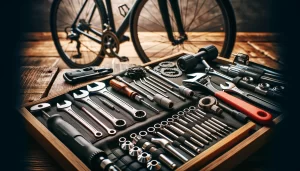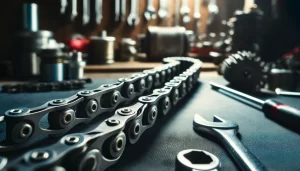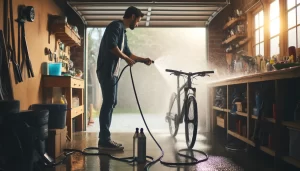Bicycle suspension systems play a pivotal role in smoothing out bumps and improving control on rough terrain, but they also collect a lot of dirt and debris during rides. Regular post-ride maintenance, especially cleaning, is essential not only to keep your suspension working optimally but also to extend the overall life of your bike.
Ignoring this crucial step can lead to premature wear and costly repairs, which could easily be avoided with some simple, routine care. In this article, we’ll dive into the essentials of efficient bicycle cleaning after every ride. By maintaining your bike regularly, you not only preserve its components and ensure smoother rides but also enhance your cycling experience.
Stick with us to uncover the best practices and techniques that will help you keep your bike in top condition with minimal effort. Whether you’re a casual rider or a seasoned cyclist, learning how to effectively clean and maintain your bike post-ride is invaluable.
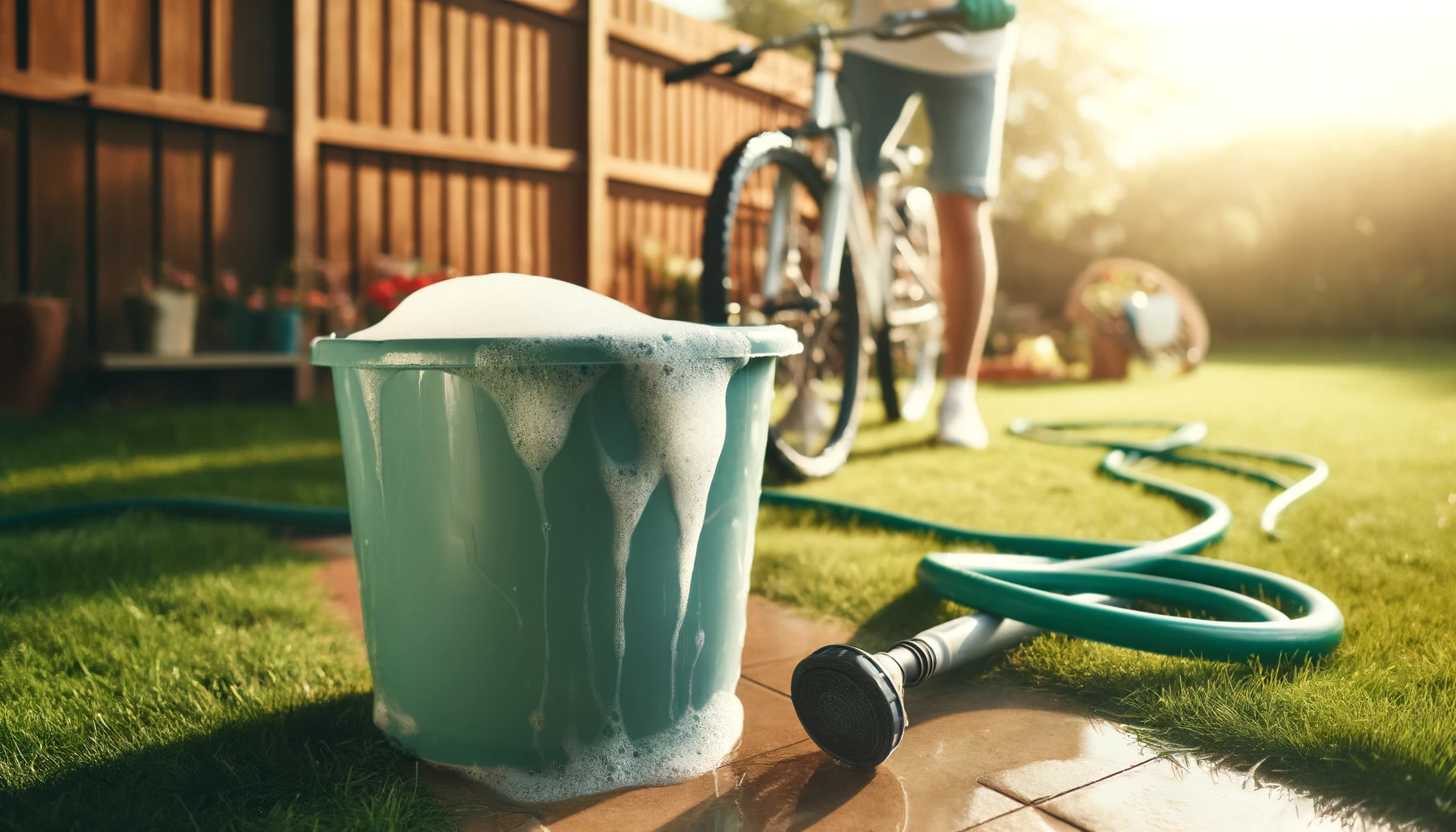
Image Source: Image Generated With DALL-E on ChatGPT
Best Bike Cleaning Products
Bike cleaning products are essential for maintaining your bicycle in top condition. Quality cleaners, degreasers, and lubricants help remove dirt, grease, and grime that accumulate during rides. A good cleaner should be effective yet gentle enough not to damage the bike’s components. Degreasers target the drivetrain, breaking down stubborn oils and residue.
After cleaning, lubricants are crucial for ensuring that the bike operates smoothly. They reduce friction and protect against rust. Choosing biodegradable and eco-friendly products is beneficial for both your bike and the environment.
Steps to Choose the Best Bike Cleaning Products:
- Identify Your Needs: Consider the specific parts of your bike that require cleaning and maintenance.
- Research Products: Look for reviews and recommendations from other cyclists and trusted biking websites.
- Eco-Friendly Options: Opt for biodegradable and non-toxic products when possible.
- Buy a Kit: Consider purchasing a complete cleaning kit that includes a cleaner, degreaser, and lubricant.
- Test Products: Start with smaller quantities to test how the products perform on your bike.
Post-Ride Cleaning Checklist: What Not to Forget
After a long ride, it’s crucial to clean your bike to prolong its life and performance. A post-ride cleaning checklist ensures you cover all essential parts and don’t overlook important maintenance tasks. This includes wiping down the frame, cleaning the wheels and tires, degreasing the chain, and checking for any potential damage.
Regular cleaning not only keeps your bike in good condition but also gives you a chance to inspect its components for wear and tear, potentially saving on costly repairs.
Post-Ride Cleaning Checklist:
- Frame and Handlebars: Wipe down to remove any dirt or mud.
- Wheels and Tires: Check for debris and clean the rims and spokes.
- Drivetrain: Apply degreaser to the chain, gears, and derailleurs.
- Brakes: Clean the brake pads and discs or rims.
- Inspect for Damage: Look for any signs of wear or damage.
- Lubrication: Reapply lubricant to the chain and moving parts after cleaning.
- Storage: Store your bike in a clean, dry place to avoid rust and damage.
Step-by-Step Guide to a Complete Bike Wash
A complete bike wash is essential for keeping your bicycle in optimal condition, ensuring longevity and smooth performance. This involves thoroughly cleaning every part of the bike, from the frame to the drivetrain, using the right techniques and products. A meticulous clean not only enhances the appearance of your bike but also improves its functionality by removing potentially damaging dirt and grime.
Step-by-Step Guide to a Complete Bike Wash:
- Prep Your Bike: Position your bike on a stand or a stable surface. Remove any accessories or detachable parts.
- Rinse: Start with a gentle rinse to remove loose dirt and mud.
- Clean the Frame: Use a sponge or soft brush and a mild cleaner to scrub the frame gently.
- Drivetrain: Apply degreaser to the chain, sprockets, and derailleur. Use a brush to scrub these components.
- Wheels and Tires: Scrub the tires with a stiff brush and the rims with a softer brush.
- Rinse Again: Thoroughly rinse off all soap and degreaser from the bike.
- Dry: Use a clean cloth to dry your bike or let it air dry.
- Inspect: Check for any damage or wear that may need attention.
- Lubricate: Apply lubricant to the chain and other moving parts.
- Reassemble: Put back any removed parts or accessories.
Practical Guide to Lubricating Bike Parts
Lubricating your bike’s parts is crucial for reducing friction and wear, enhancing performance, and preventing rust. Different parts of the bike require specific types of lubricants based on their exposure to elements and movement type. Regular lubrication is a simple yet effective way to maintain your bike’s health.
Practical Guide to Lubricating Bike Parts:
- Choose the Right Lubricant: Select a lubricant appropriate for your bike’s conditions (wet, dry, or all-conditions lubricant).
- Chain: Apply lubricant to the inside of the chain while turning the pedals backward. Wipe off excess to prevent dirt accumulation.
- Derailleurs: Lubricate the pivot points on the front and rear derailleurs.
- Cables: Apply a small amount of lubricant to the brake and shifter cables to ensure smooth operation.
- Brake and Shift Levers: Put a drop of lubricant on the moving parts of your levers.
- Pedals: Lubricate the spindle and bearing surfaces to ensure smooth rotation.
- Re-check and Clean: After lubricating, cycle through the gears and use the brakes to ensure everything works smoothly. Wipe away any excess lubricant.
Tips for Drying Your Bike After Washing
Drying your bike thoroughly after washing is crucial to prevent rust and ensure that moisture does not seep into sensitive areas such as bearings or the interior of the frame. After rinsing your bike, it’s advisable to remove as much water as possible using a clean, soft towel.
Start by drying the larger surfaces, such as the frame, handlebars, and seat, and then move on to smaller, hard-to-reach areas. A microfiber cloth can be particularly effective for absorbing water without scratching the bike’s surface. For areas like the chain and gears, you can gently shake the bike or use compressed air to blow out water from the nooks and crannies before applying lubricant.
Additionally, leaving your bike in a well-ventilated area or under direct sunlight can help speed up the drying process. However, be mindful not to expose your bike to harsh sunlight for prolonged periods, as it can damage some components. If you have access to it, a bike work stand can be invaluable for elevating the bike, making it easier to rotate and access different parts during the drying process.
Ensure that all components are dry before reassembling any parts you may have removed during cleaning, such as wheels or accessories. Proper drying is not only about preventing immediate water damage but also about setting the stage for effective lubrication and maintenance.
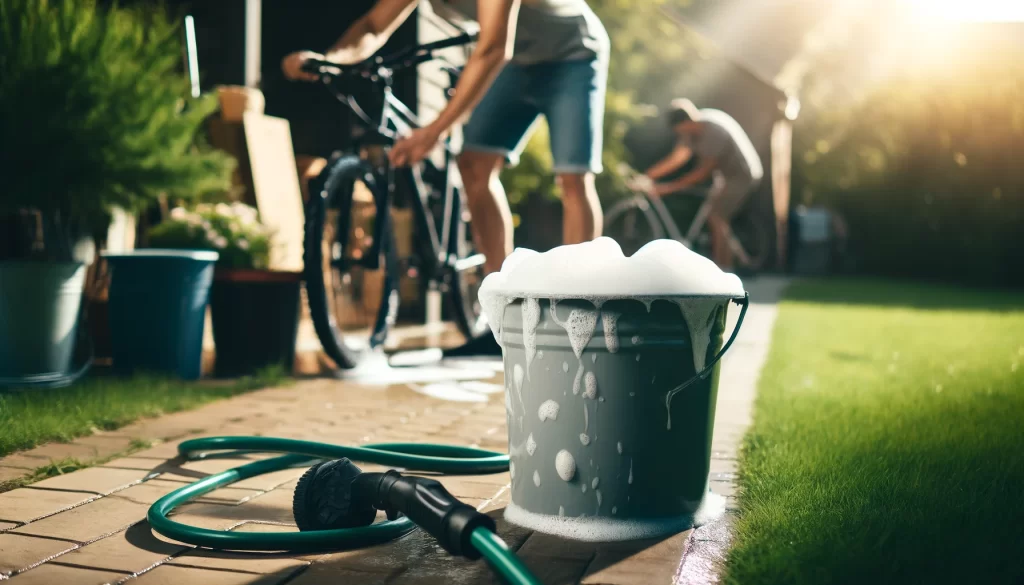
Image Source: Image Generated With DALL-E on ChatGPT
The Importance of Maintaining a Cleaning Routine for Bike Longevity
Maintaining a regular cleaning routine for your bike is not merely about aesthetics; it’s an essential practice that significantly impacts the longevity and performance of your bike. Dirt, road salts, and environmental contaminants can accelerate wear and tear on the bike’s components.
Regular cleaning helps to prevent the buildup of these materials, which can degrade the quality of your drivetrain, cause corrosion on metal parts, and impede the smooth operation of mechanical systems. A clean bike also provides the opportunity to inspect the frame and components for damage or wear, allowing for timely repairs or replacements that can prevent more serious issues down the line.
Moreover, a well-maintained bike ensures better performance, safety, and a more enjoyable riding experience. Clean components are more efficient, reducing the effort needed to pedal and operate the bike. This is particularly crucial for components like brakes and gears, which must respond quickly and effectively in various conditions.
Establishing a routine, such as cleaning the bike after a set number of rides or following rides in wet or muddy conditions, ensures that maintenance becomes a regular part of your cycling habits. Ultimately, the effort put into keeping your bike clean and well-maintained pays dividends in extending its life and enhancing your overall cycling experience.
Common Questions About Post-Ride Bike Maintenance: Efficient Cleaning
1. How often should I clean my bike?
The frequency of cleaning depends on how often and in what conditions you ride. A general rule is to clean your bike after any ride in wet or muddy conditions, or at least once a week if you ride regularly in cleaner conditions.
2. What products should I use to clean my bike?
Use a mild bike-specific cleaner that can safely remove dirt and grime without damaging the bike’s components. Avoid harsh chemicals like ammonia or bleach-based cleaners, as they can corrode metal parts and weaken plastic and rubber.
3. Can I use a pressure washer to clean my bike?
It’s generally advised to avoid high-pressure washers as they can force water into bearings, causing them to wear out prematurely. Instead, use a gentle stream of water from a hose or a bucket of water with a sponge.
4. What is the best method to dry my bike after washing it?
After rinsing, use a clean microfiber towel to wipe down the bike thoroughly. For inaccessible areas, use compressed air or a leaf blower on a low setting to remove water without damaging sensitive parts.
5. Should I lubricate my bike immediately after washing it?
Yes, after the bike is dry, it is important to lubricate moving parts such as the chain, derailleurs, and cables to prevent rust and ensure smooth operation.
Maintaining your bike through regular post-ride cleanings is a critical aspect of bicycle care that extends the life of your equipment and enhances your cycling experience.
By ensuring that each component of your bike is cleaned and inspected regularly, you not only maintain the functional integrity of your bike but also improve its performance and safety on the road or trail. It’s a rewarding practice that every cyclist should integrate into their routine to keep their bike in prime condition and ready for the next adventure.
Furthermore, effective post-ride maintenance fosters a deeper connection between the cyclist and their bike. This routine provides an opportunity to understand the workings of each part and to spot early signs of wear or damage.
With consistent care, cyclists can greatly reduce the likelihood of mechanical failures and enjoy smoother rides. Therefore, investing time in post-ride maintenance is not just about upkeep but also about ensuring that each ride is as enjoyable and safe as possible.
Did you like the article? Be sure to check out more content like this in the Maintenance Guide category or see more related content below.


